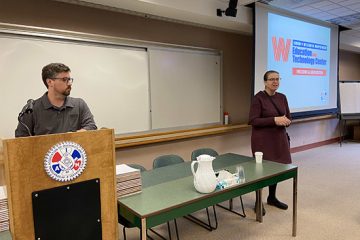Montreal, September 25, 2019 – The increase in the carbon footprint of air travel and the rapid growth in the number of aircraft in aircraft cemeteries are two trends that we will have to reverse quickly in the name of protecting the environment.
Last month, we presented a document containing a series of proposals on aerospace and the environment. Since almost all of the federal political parties have obtained a copy, we believe it would be appropriate to hear what they have to say about our proposals in this international climate week.
Reducing the carbon footprint in air transport
The increase in commercial aircraft in service from 5,800 to more than 24,000 between 1980 and 2018 means that aviation’s carbon footprint continues to grow even as fuel consumption of new generations of aircraft has decreased.
On September 19, a report by the International Council on Clean Transportation estimated that 918 million metric tons of Co2 were the carbon footprint of air transport (passengers and goods) for 2018. For its part, the Rocky Mountain Institute predicts in a report published in January that carbon emissions from the air sector will reach one gigaton from 2020, representing between 3% and 9% of annual global emissions.
“It is clear that we need to significantly reduce the accelerated carbon footprint of air transport,” says David Chartrand, Quebec coordinator of the Machinists Union. In Quebec we have all the tools to tackle this problem. Already in 2015, research carried out by the Group for the Development of greener aircraft (SA2GE) proposed a 5% reduction in CO2 emissions per aircraft. In the field of electric aircraft, interesting advances have also been made by the Faculty of Engineering at the University of Sherbrooke, which believes it will soon be able to carry passengers over short and medium distances in aircraft Electrical. That said, we need to accelerate the pace and mobilize more resources, and to achieve this, there has to be political will.”
Encouraging the development of aircraft storage and recycling activities in Quebec
According to Airbus’ latest forecasts, 39,210 new aircraft will be ordered between 2019 and 2038. Of these, 14,210 will be used to replace aircraft in operation. This would mean that approximately 710 commercial aircraft per year, or almost 2 per day, will be removed from the air over the next 20 years. The replaced aircraft will largely join the tens of thousands of aircraft already stored or abandoned near an airport or in a desert. Such storage, often unsecured, inevitably leads to soil contamination by the fluids of the device and the toxic metals of its components, such as lead, chromium and cadmium.
“We are one of the places in the world where aircraft components are manufactured the most, so it would make sense for us to take responsibility for developing our aircraft recycling business,” argues the Quebec spokesperson for the IAMAW. In Canada and especially in Quebec, we have the talent, the knowledge and the capacity to meet this challenge, all we need is political will,”
In addition to addressing an environmental problem and waste of resources that is getting worse, aircraft recovery represents excellent economic potential, job creation, training and research.
Last July, the start-up Aerocycle received its certifications from the Aviation Supplier Association (ASA) and the Aircraft Fleet Recycling Association (AFRA), which allows it to recycle aircraft, repackage and resell certain Components. This is the first company in Canada to obtain these certifications.
“Whether it’s to reduce Co2 emissions or to demand better management of end-of-life aircraft, strict standards will eventually be imposed internationally. If our governments start to get involved now in the development of an eco-responsible aerospace sector, in addition to doing our part to protect the environment, we will be in a good position to benefit economically,” concludes David Chartrand.
Summary of environmental proposals presented in the IAMAW book “Propel Quebec to a new heights, for a renewed commitment to aerospace.”
- Increase our efforts in creating a green aircraft and improving and better managing the lifecycle of aircraft.
- Promote the eco-responsible use of the resources and infrastructure allocated to the production of aircraft and its components in Canada.
- Intensified efforts for an energy transition (alternative energy sources for aircraft), by supporting research projects in our national research and development institutions.
- Support the creation of a recovery subsidiary for aircraft and their components in Quebec.
-30-
For information:
David Chartrand, IAMAW Quebec Coordinator
Bur: 514-956-1578 | Cell: 514-231-9100
E-mail: dchartrand@iamaw.org
———————-
This article was originally posted on the IAM Canada website. View the original post here: Putting our aerospace skills at the service of the environment


